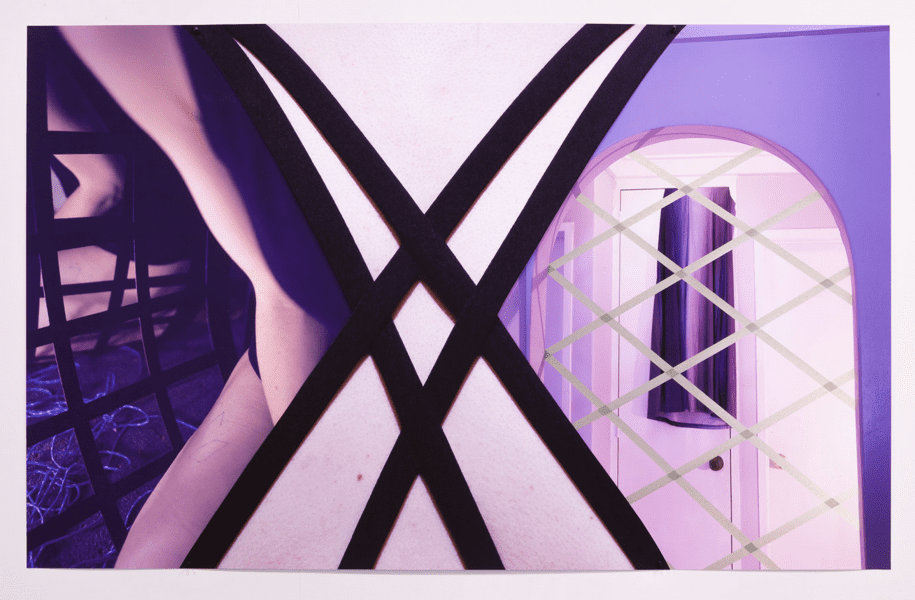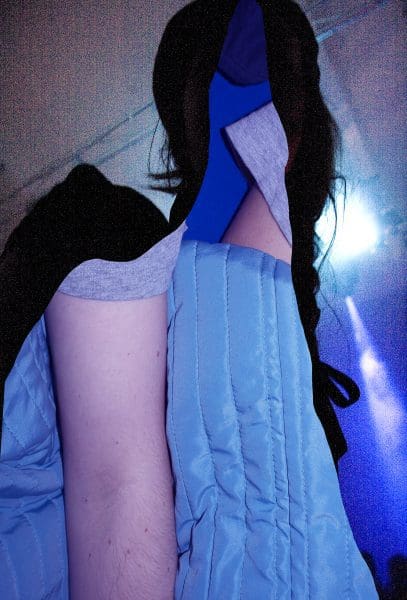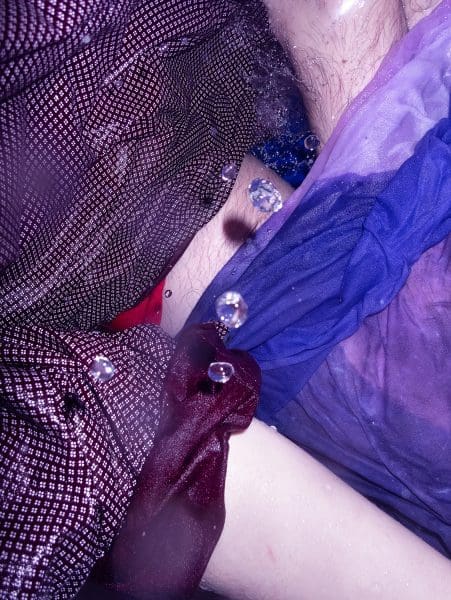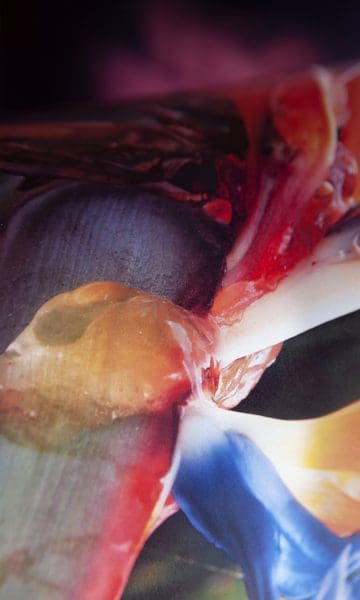
Making Space at the Table
NAP Contemporary’s group show, The Elephant Table, platforms six artists and voices—creating chaos, connection and conversation.






PDA, Jac Ball’s April exhibition at the Perth Centre for Photography (PCP), has been postponed due to COVID-19 restrictions. Art Guide Australia will continue to share articles and stories on artists and exhibitions during this time, encouraging viewers to experience art online. New exhibition dates will be posted when they are confirmed.
Salmon bathroom tiles, pool inflatables, mottled carpet and Hawaiian shirts populate Perth artist Jac Ball’s photo-collage series PDA, which was first shown at Turner Galleries in 2019. Taking a longform approach, Ball (who uses the pronouns them and theirs) adds to the series continuously. Each new, deeply pigmented vignette broadens the existing corpus and different sizes and combinations of prints are assembled with every new showing. Altogether, PDA constitutes a highly personal visual language with which Ball ruminates on change, intimacy and trans bodies.
The series can be read in modular sequence, and as one image follows another, Ball’s penchant for particular surfaces becomes clear: soft plastic, mirrors, cobalt fabrics and youthful limbs arranged to brandish idiosyncratic freckles, hairs and musculature. Although the series doesn’t form a narrative, it illustrates a cascade of sensory moments drawn from the artist’s immediate environs.
Ball is an omnivorous picture-taker, always awake to how their surroundings might be collected as photographs into a vast digital stash. “I don’t delete a single image,” says Ball. “Happy snaps, social media and travel photos are all placed in one archive. Then I begin ranking, sorting, printing, layering, re-photographing and embellishing.” The collaging process is alchemic; Ball intuits when each image has reached the proper intensity, or “thickness,” and coheres with the rest of the series. “It’s always about how they fit together as a collective. I’m not interested in arriving at one heroic masterpiece. It’s about fragments; keeping them, tending to them.”
Working iteratively and without paying mind to any distinction between artistic and ‘civilian’ image-making, Ball’s artistic principles have shifted. “I had these ingrained beliefs about working in a masculine, studio-based model; maintaining my productivity and keeping my career separate from the rest of my life. Since PDA, my life and practice are completely connected and I’m liberated from feeling the need to perform productivity, professionalism or conventional studio work: and I’m more engaged this way.”
Somewhere between adolescent silliness and accusation, the term ‘PDA’ (public display of affection) can fluctuate in intent and effect according to how it’s used. Ball arrived at the title after a three-month journey in Europe and Southeast Asia attuned them to how different cultures interpret people and bodies.
“Depending on where we were, my partner and I were read differently. It was like shapeshifting. I was starting to take testosterone and my body was changing. People saw us sometimes as a queer couple, other times as sisters or twins, as men or as women.”
PDA has enabled Ball to intone with an existing lineage of queer visual language, from camp to collage and amateur theatre, adding their own new chapter. “I’m thinking about trans bodies and identity, how to express ambiguity as positive and transformation as playful. I’m less interested in exploring materials in the process of disintegration, breaking or dissolving.” Instead, collage functions as Ball’s analogy for the complexity of identity and the materials in their photographs appear in states of benign flux: inflation, soaking, folding or changing colour.
These “small glimmers” of affirmative material symbolism form the heart of PDA. “I’m reshaping my body,” says Ball. “I’m trying to mirror this in my process, remaking and layering. The method aligns with the guts of the project.”